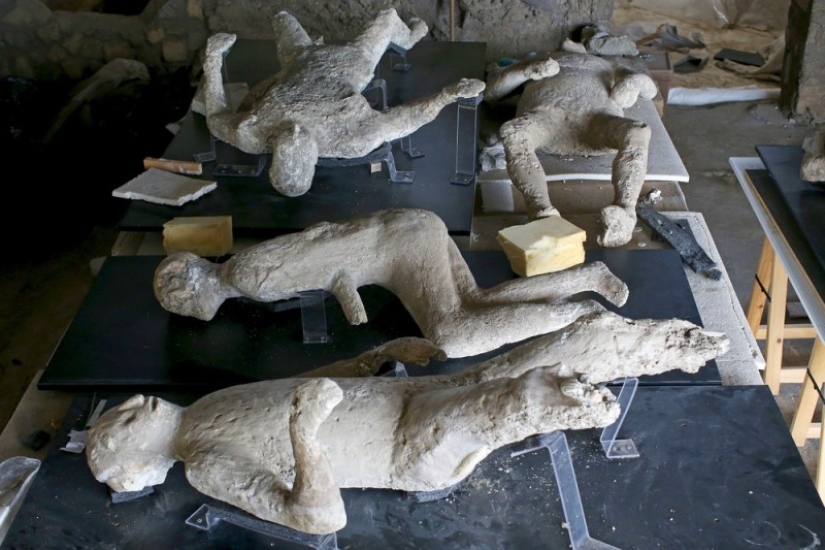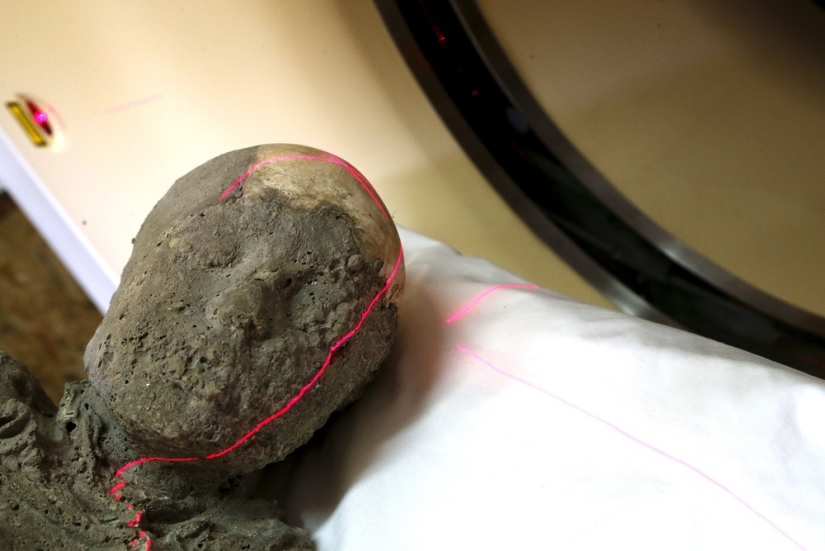How the inhabitants of Pompeii died
Pompeii, an ancient Roman city near Naples, was buried under a layer of volcanic ash as a result of the eruption of Vesuvius on August 24, 79. The eruption, the precursor of which was a strong earthquake, lasted about a day. It led to the death of three cities — Pompeii, Herculaneum and Stabia.
It is curious that everything in the cities has been preserved as it was before the eruption. Under the ash layer, archaeologists found streets, houses, remains of people and animals. Of the 20,000 inhabitants of Pompeii, about two thousand people died in buildings and on the streets. Most of the residents left the city before the disaster.
An expert team of archaeologists, radiologists, orthodontists and anthropologists has begun using computer axial tomography technology to study plaster casts of the victims of the famous Pompeii. A 16-layer scanner found many skeletal remains and almost perfect teeth. Let's look at the process of scientists' work.



A cast from the face of a boy who died during the eruption is studied using computed tomography.
A cast from the body of the same boy.
The restovrator is trying to match various fragments of the bodies of the victims of the eruption.
A plaster cast of a man who died during the eruption.
Tourists on the cobblestone streets of Pompeii.
